This article goes from the very mundane to the origins of life on this planet to the ultimate, tackling the staggering question of how everything began (begins), that is, came (comes) into existence.
What do "Buddhists" do on New Year's Day? If you're living in Pasadena, you're stuck in traffic along with everyone else, suffering government reaction to their own American terrorism in New Orleans and Las Vegas.
Is it a false flag, an excuse for suicide, GIs just following their preprogramming? Either way, both events were carried out by government issue government employees, and we can debate whether they were on or off duty. Most soldiers know. Duty never ends.
Pasadena, a prosperous city (which is putting it mildly because it was once the city famous for the biggest spread between its richest and poorest populations, where it is the best of times and worst of times and really a tale of two cities) in the LA Foothills, was made untraversable by 1,000 cops.
- City, tournament issue statement on New Orleans incident that left at least 10 dead (Pasadena Now): “The Parade is a top-level Federal event and we have to ability to call in additional resources if the need exists.”
Either they were on duty or more likely on overtime, doing a whole lotta nothing other than blocking streets and freeway entrances with the cruisers they were leaning on while chatting with each other as some gave hand signals to turn around and go the other way. What other way? That parking lot of a jammed street we're diverting all traffic onto.
This was because some of its trained soldiers were tasked or took it upon themselves to created some public mayhem which the government could use.
1. What do Buddhists do in the beginning [of each New Year]?
Buddhists, most of them, traditionally visit a Buddhist temple or monastery to see monastics, receive blessings, protective chants, see one another, hear the Dhamma, and meditate.
It's custom and tradition, not a rule. It's a joy to do. The crowds are comforting, particularly in this country, where January 1st can seem like being back in the Old Country.
When did the Buddha ever say "line" as in the timeline? Not one that we can remember. But he often spoke of cycles, circles, and cycling. Things are spinning, or as Alan Watts explains, the world is full of squiggles rather than the lines we conceptualize and speak of. Imagine the beautiful Celtic Knot. It's a nice way of visualizing the cycles-within-cycles.
Things are going in one major cycle (through the Yugas), but they are also going through may minor cycles as they do it. The Ages go from Golden (Satya Yuga) through to Dark (Kali Yuga). But within that long loop there are many little loops. A thread, a cotton suture, may seem like one straight line, but up close, that is not how it is. It is wound, curvilinear, intersected, netted, networked, bunch, pulled, and spiraling. This gives its strength. Perfectly aligned linear fiber would not hold together.
Gibberish or a tautology, which would you prefer?
 |
| Look at that clock just hanging there. |
(It's an illusion arising from the hallucination/logical imposition that time is a linear line. Imagine a linear timeline. Time starts here; this is the beginning. What was before the beginning? System error. Question does not compute. This spot is the beginning, and the end is over on the other side, so there can't be a pre-begin to conceptualize -- not because it doesn't exist but because the assumptions underlying this system are in error).
If time (the world) is cyclical, the question, "What was before the beginning?" makes sense, and there's an answer. Before the beginning was the previous end. (Imagine a timecircle rather than the customary timeline. This point is the beginning. What does the point before it represent? It represents the previous end. Time is neither a circle nor a line, which are just representations to try to visualize time.
Look at an analog clockface. What do two sticks pointing straight up represent? That is 12:00 o'clock, the beginning (of a day), the first point. If that is the beginning, what was before the beginning? The end (of the previous day). That is time in Buddhist cosmology. Time seems to be more than that, something mutable, going in either direction, able to be sped up and slowed down, and subject to perceptual anomalies.
- If all things are everywhere all at once, as seems to be the case, we can travel through time, but whether that actually changes time permanently is hard to say: Everything becomes impermanent because it can always be changed by such travel, whether is changed or not. That it can changed is what makes it impermanent and mutable.
So when hearing or saying the phrase "in the beginning," be not confused to think that "beginning" ever references a first point, first cause, prime mover, even if one wishes or is sure that would be God. There is a beforetime that was before time. It came into existence the moment someone set up the rule that this is the way we are going to talk about it, conceive of it, believe it to have been.
Science
Science already agrees because it says, "Energy can neither be created nor destroyed." This is an outrageous statement. First, is energy even defined? "The ability to do work"? So Jebediah, who will do no work today, is full of 'energy' because he could if only he'd get up and get to it? Let's hope the axiom is true because if it is, there you have it, agreement.
Energy always is (and therefore always was and will be), and though time may have started, energy did not. So "What was there before the beginning?" makes sense. There was energy, which is everything and not a thing. So it is both true that everything, or every potential thing, has always been, and none of it is real. Didn't that slit light experiment prove anything? It seems not to have.
Let's get metaphysical. What about that double-slit? And what is quantum physics, Brian Cox?
(Neil DeGrasse Tyson recently said on his podcast with that other Black guy that the experiment is given inordinate weight and is misunderstood because the "act of observing" caused the result to change. He did not mean a human observing, like it sounds. He meant the physical scientific act of taking the measurements, as if light waves from the observation camera were impacting the photons being photographed).
2. Genesis on Earth
This being the case, on the subject of beginnings, the Buddha could be asked, "How did life on Earth begin?" (We assume this means, "How did life begin?," which it does not, instead only discussing life on Earth).
The Aggañña Sutta (DN 27) is a discourse by the Buddha to two Brahmins, Bharadvaja and Vasettha, who left their family and varna (caste) to become Buddhists. The two are insulted and maligned by other Brahims for their intention to become members of the Monastic Sangha.
The Buddha explains that caste and lineage cannot be compared to the achievement of morality practice and the Dhamma, as anyone from the four castes can become a monastic and reach the state of full enlightenment (arahant).
He then explains about the beginning and the destruction of the Earth, a process determined by karma and devoid of a supreme controlling being.
The Buddha explains the origin of the social order and its structure, including the castes. He emphasizes the message of universality in the Dhamma because "the Dhamma is the best of all things."
- Read the sutra: Agganna Sutta (DN 27)
3. How do things begin (originate)?
Ven. Paticcasamuppāda, Buddhist Dictionary and Dhr. Seven (ed.), Wisdom Quarterly
 |
| Buddhist Dictionary |
The purpose of this process was to make an end of all suffering. It worked. He then realized the significance of it and famously said:
"Who sees me sees [this process], who sees [this process], sees me."*
The Five Aggregates clung to as self are dependently originated. The craving, adhering, being attracted to, and attached to the Five Aggregates is the origin of suffering. Letting go and being rid of craving and clinging for the Five Aggregates is the end of suffering.
Furthermore, the Buddha extolls, "It is because of not seeing Dependent Origination that both you and I have gone on wandering through this interminable Round of Rebirth in search of pleasure only to be reborn here, reborn there..."
What discovery could be so spectacular and significant? It is the final answer to all problems, but it is not easy to grasp or penetrate: paticcasamuppāda.
- "One who sees Dependent Origination sees the Dharma. One who sees the Dharma sees Dependent Origination."
- "Dependent Origination" is the Doctrine of the Conditionality of all physical and mental phenomena.
- This, together with the Doctrine of the Impersonal nature of all physical and mental phenomena (anattā), forms the indispensable condition for a real understanding and realization of the teaching of the Buddha, the Dhamma.
- This doctrine shows the conditionality and dependent nature of the uninterrupted flux of manifold physical and psychic phenomena of existence conventionally called the ego, self, soul, personality, person, animal, etc.
- The Doctrine of the Impersonal proceeds analytically by splitting (separating into elements, cutting, dissecting, analyzing) existence into its ultimate constituent parts -- which are mere empty, insubstantial phenomena or elements.
- The Doctrine of Conditionality, on the other hand, proceeds synthetically by showing that all these phenomena are, in some way or other, conditionally related with each other.
- In fact, the entire Abhidhamma Pitaka ("Basket Collection of the Doctrine in Ultimate Terms"), as a whole, deals only with these two doctrines -- phenomenality, implying the impersonal nature and conditionality of all existence.
- The analytical method is applied in Dhammasangani, the first book of the Abhidhamma Pitaka, whereas synthetical method is applied in the last book of the Abhidhamma Pitaka called the Patthāna.
For a synopsis of these two works, see Guide I and VII. (This is a reference to the German Buddhist author's book Guide Through the Abhidhamma Pitaka, 3rd ed., 1971, available free from the Buddhist Publication Society).
Guide through the Abhidamma (Nyanatiloka) - Although this subject of Dependent Origination has frequently been treated by Western authors, by far most of them have completely misunderstood the true meaning and purpose of the doctrine.
- Even the 12 terms, known as the causal links (nidanas), have often been translated wrongly, [and the first has been made to sound like some prime mover or first cause, when the whole of the doctrine bends over backward to show how all things come into being by cogenesis, that is, by multiple causes. Everything that's a thing arises by Dependent Origination, and there isn't anything that is caused or conditioned by only one thing. Nirvana, unlike everything else, is not a thing and therefore is not subject to the characteristics or pitfalls of things, known as the Three Marks of Existence].
APPLICATION: Conditionality as the Middle Way: Not-self and Emptiness
Wikipedia edit by Wisdom Quarterly
 |
| What use is wisdom? - It depends. |
In the Kaccānagotta Sutta (SN 12.15, parallelled at SA 301), the Buddha states that "this world mostly relies on the dual notions of existence and non-existence" then explains the right view as follows [58]:
"But when one truly sees the origin of the world with right understanding, one will not have the notion of non-existence regarding the world. And when one truly sees the cessation of the world with right understanding, one will not have the notion of existence regarding the world [59].
The Kaccānagotta Sutta then places the teaching of Dependent Origination (listing the 12 links in forward and reverse order) as a Middle Way that rejects these two "extreme" metaphysical views, which can be seen as two mistaken conceptions of the self [60, 5, Note 8]. More
- Text by Dhr. Seven, Amber Larson, CC Liu (eds.), Wisdom Quarterly



.svg.png)

.png)





















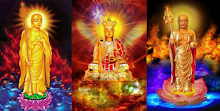



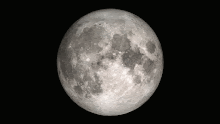















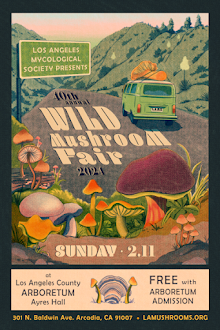





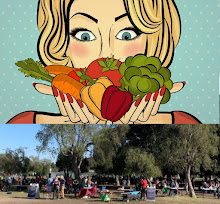
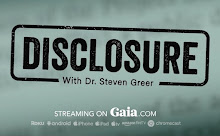








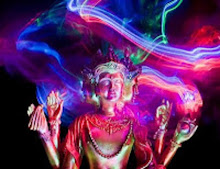









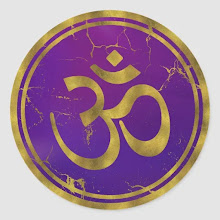





















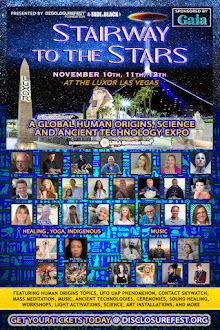
























































































































































No comments:
Post a Comment